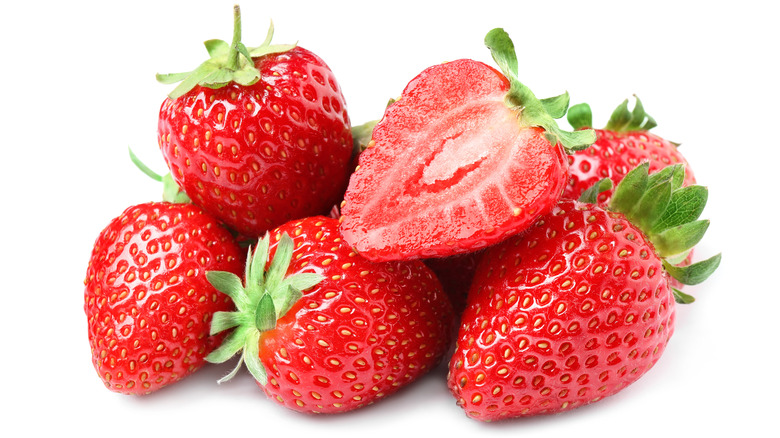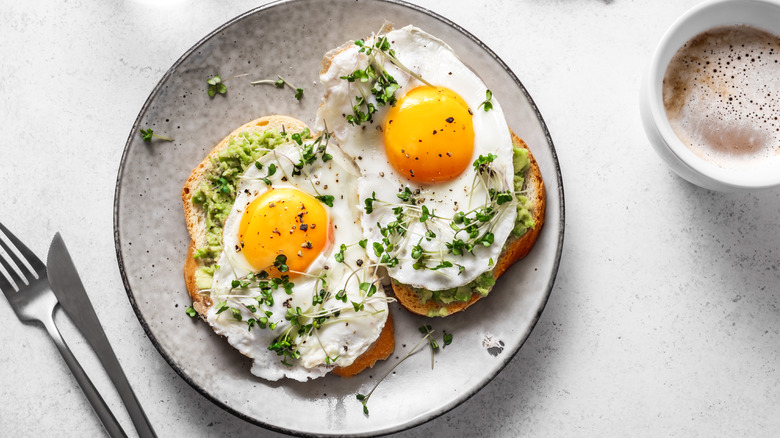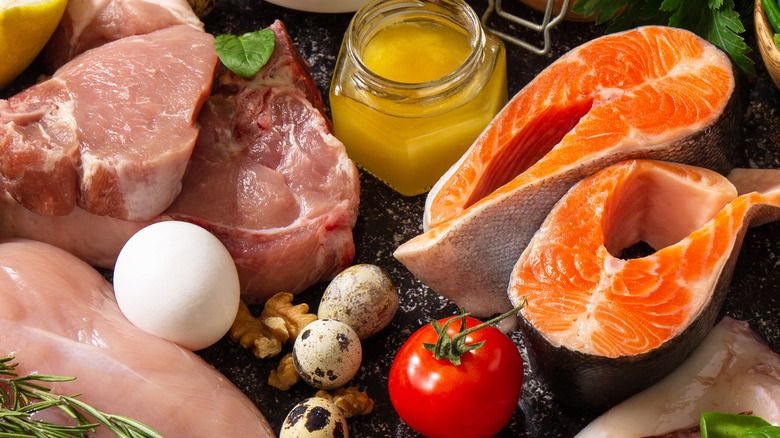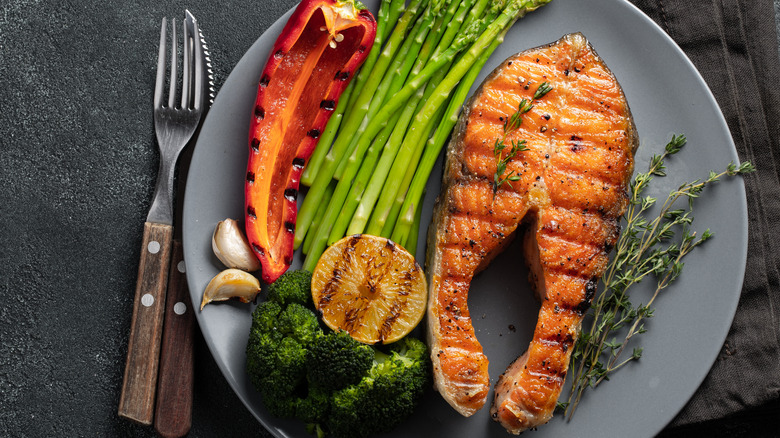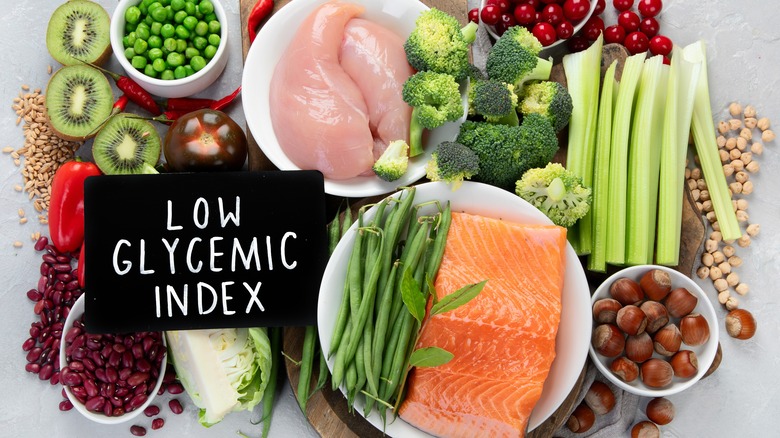Reasons All Calories Are Not Created Equal
Among the many types of diets out there, the basic assumption is calories in, calories out. In other words, you eat fewer calories per day and find ways to burn off excess fat. However, it's important to look a little further into what exactly a calorie is and why calories from different foods produce different effects on the body. According to The Conversation, a calorie is how much energy it takes to heat 2.2 pounds of water by 1.8 degrees. Your body needs a certain amount of this energy each day to perform daily functions, such as breathing and digestion. The amount of energy your body needs in a given day is called energy expenditure, and certain types of diets and foods create a higher energy expenditure. Now, if a calorie is just a calorie, it doesn't explain why eating the same number of calories on different diets can produce greater weight loss.
Well, according to Healthline, some foods are inefficient and only release energy from the calories as heat. Others affect hormones and send signals to the brain that you're full. Therefore, you can get a better quality of calories from foods that contain more fiber compared to empty calories that provide no nutrients (via The Conversation). Let's take a closer look at how different foods and macronutrients can influence weight and metabolism.
Fructose is processed differently than glucose
Luckily, you can find fructose in honey, dried and fresh fruits, fruit jam, and certain breakfast cereals, explains the Sugar Nutrition Resource Centre. Similar to fructose, glucose can be found in honey, dried fruits, manufactured juices, pasta sauces, and small amounts of corn. However, mice who were fed a high-fat diet and consumed water sweetened with fructose or glucose gained more weight than the mice on a regular diet, as per a 2017 study in The Journal of Clinical Investigation. When comparing fructose and glucose, the mice who consumed a high-fat diet and fructose-flavored water gained the most weight and became more insulin resistant than the glucose-fed mice.
A gram of fructose has the same number of calories as a gram of glucose, notes Healthline. In fact, tissues in your body can process glucose, but only your liver can metabolize fructose. Therefore, consuming too much glucose can lead to insulin resistance, excess abdominal fat, increased triglycerides, and increased LDL cholesterol. According to a 2004 study in The Journal of Clinical Endocrinology and Metabolism, fructose also doesn't fill you up as much as glucose because fructose can increase ghrelin, which is a hormone that makes you feel hungry. This doesn't mean you should toss out all of your fruit. Fructose in excess isn't good for you, but because fruit has fiber and water, the benefits make them worth keeping in your diet.
Some calories make you feel full
If you've ever noticed that you feel more full after eating eggs rather than eating a donut, you'll understand the satiety index (per Healthline). A 500-calorie muffin won't fill you up with as much as 500 calories of eggs. In fact, researchers tested dozens of food choices on how satisfied people were after two hours (via Diabetesnet.com). They gave people 240 calories of certain foods, such as popcorn and beef, to measure how hungry people were every 15 minutes.
The baseline of 100% was white bread, and anything above that was considered to be satisfying. Croissants, for example, were the lowest at 47% satiety index, but crackers scored 127%. Popcorn or grain bread, on the other hand, might keep you a little more full after two hours with a score of 154%. If you like fruit, oranges and apples were rated 202% and 197% satiety, respectively, and bananas were the lowest at 118%. Among breakfast foods, oatmeal scored 209%, but muesli was even with white bread with a satiety score of 100%. Protein keeps you fuller longer, especially fish with its satiety score of 225%. Additionally, eating 30% of your daily calories from protein can help with weight loss because you'll eat fewer calories, according to a 2005 study in The American Journal of Clinical Nutrition.
Protein requires more energy to metabolize
Fortunately, increasing protein in your diet can help combat obesity for three reasons, explains a 2008 review in The American Journal of Clinical Nutrition. First, protein makes you feel more full (keep in mind the satiety index again), so you won't eat as much. Second, you're able to keep or add to your muscle mass, which can help boost metabolism. And last of all, adding protein to your diet increases thermogenesis, which improves overall energy expenditure.
Keep in mind, protein has a thermic effect of 25%, which means for every 100 calories of protein you consume, your body needs 25 calories to digest it (per Healthline). Compare that to fat, which has about 2% or 3% thermic effect. Similarly, processed foods are digested more easily than whole foods. A 2019 review in the Journal of the American College of Nutrition suggested that your metabolism increases by eating mostly carbohydrates and protein or by following a low-fat plant-based diet.
Low-carb diets can reduce appetite
Low-carb diets can also lead to you eating fewer calories overall because you have less appetite, notes Healthline. Compared to low-fat diets, low-carb diets can drop two or three times more weight. Low-carb diets also tend to have more protein, which can contribute to greater weight loss. A 2004 review in The American Journal of Clinical Nutrition found that high protein and/or low carb diets can lose as much as 5.5 pounds more weight than others.
Additionally, a 2009 study in The American Journal of Clinical Nutrition had people either adopt a low-carb or low-fat diet with the same amount of calorie restriction. Although both groups lost weight, the low-carb diet significantly decreased their levels of triglycerides and increased their HDL and LDL cholesterol levels. Therefore, different sources of calories can have different effects on the body.
Keep in mind, low-carb diets often limit carbs to as little as 20 grams per day, even though this goes against the Dietary Guidelines for Americans, according to the Mayo Clinic. In fact, many of them cut out healthy grains, legumes, as well as refined carbs that impact blood sugar. On the other hand, some do allow for fruit, vegetables, and whole grains.
The glycemic index
Some food can spike blood sugar more than others, so this is where the glycemic index differentiates foods. Refined grains, sucrose, and high-fructose corn syrup are some of the foods that are absorbed quickly into your body, explains Healthline. Not only do they quickly increase your blood sugar, but they also cause a hard crash later, which might have you reaching for more high-glycemic foods later on. Therefore, eating a steady diet of high-glycemic food will cause you to eat more calories overall.
However, if you're a long-distance runner or recovering from exercise, you might need high-glycemic foods to replenish, according to Harvard Health Publishing. You could choose foods like watermelon, which has a glycemic index of 76, or cornflakes, which scores 81. Foods that are lower on the glycemic index release glucose into your system more slowly. Barley, for example, has a glycemic index of 28, while an apple has 36.
Any food that scores below 55 is considered low glycemic (via Mayo Clinic). Foods in between range from 56 to 69, and high-glycemic foods are those over 70 on the index. However, the glycemic index doesn't consider how much food you're going to eat. Therefore, experts recommend going by portions. Overall, calories from different foods can impact your blood sugar, cholesterol levels, appetite, and metabolism, so it's not necessarily just calories in, and calories out.


